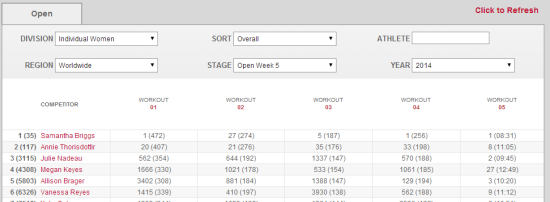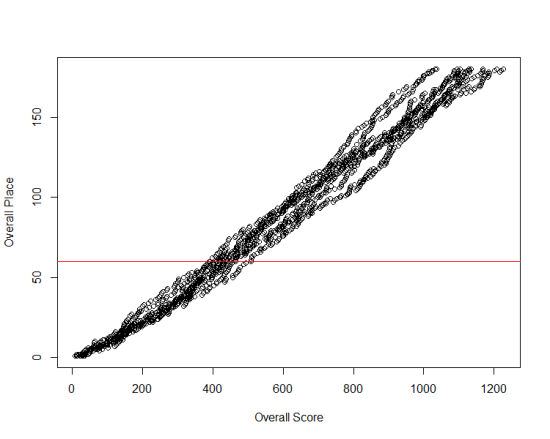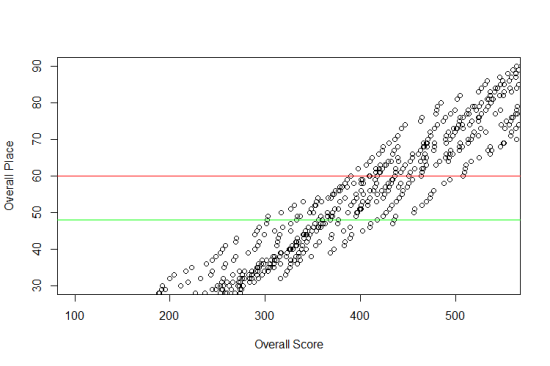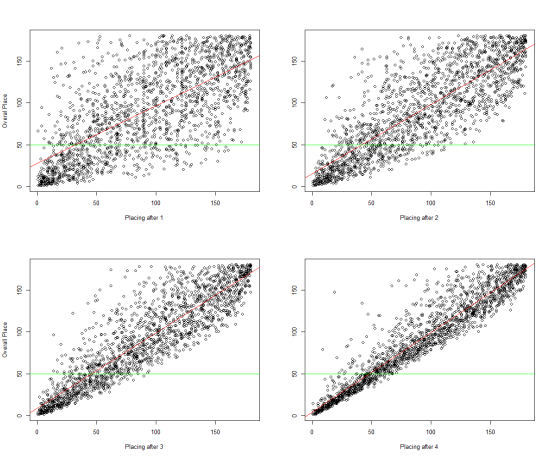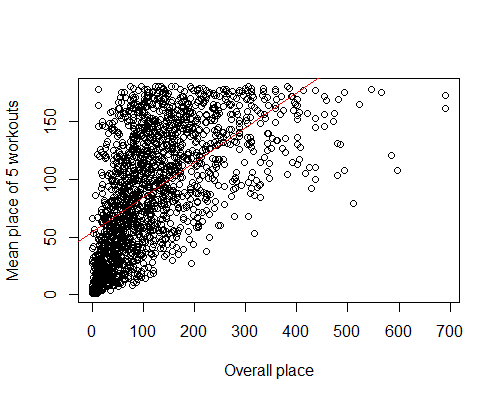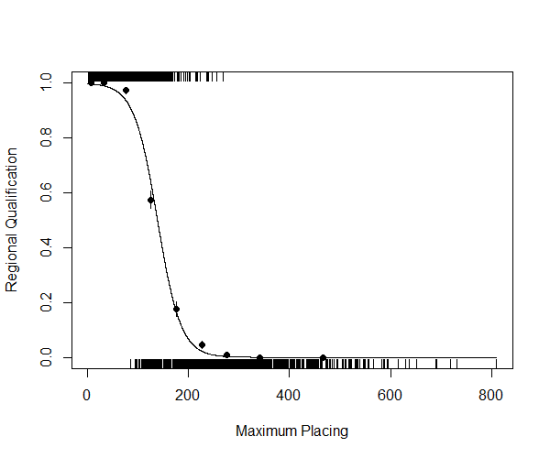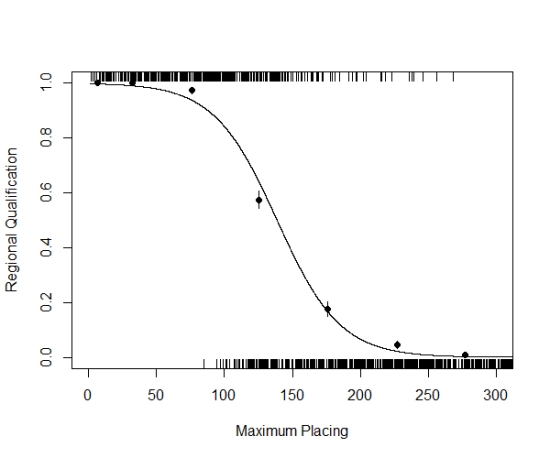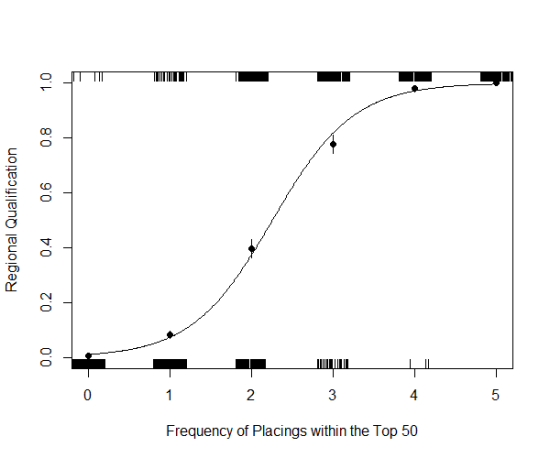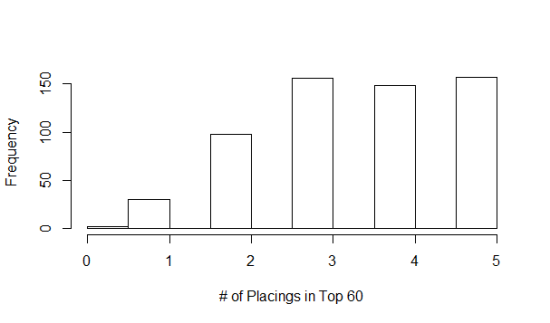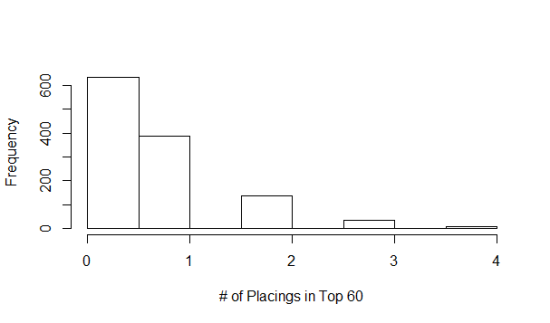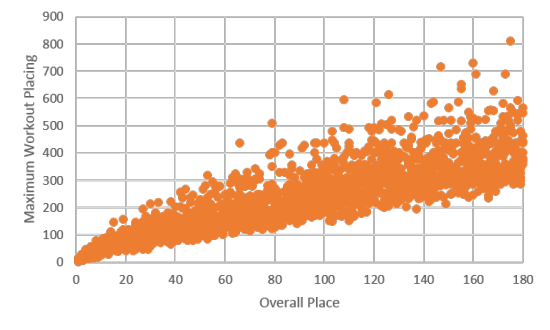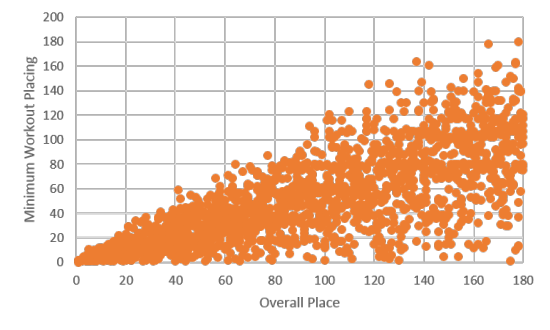Here’s a summary post for my series on predicting regional qualification from single-workout performance during the CrossFit Games Open.
I’ve again copied the leaderboard data from the Games website for the top 180 women in the five regions indicated in my first post (additionally, I’ve added a sixth region with the dataset used in these analyses, the South Central region, only because I couldn’t remember if I took SoCal or S. Central last time).
“You should not go to Regionals, you should not go to Regionals if you don’t have a basic move like the muscle-up. Period.” – Dave Castro
No, Dave Castro, you do not need to have a muscle-up to qualify for Regionals… although it would help.
The results of 2014’s CrossFit Games Open were similar to past years in that there was a high range in overall score in the top 48 in each region, and there were atheletes that qualified for Regionals that did not complete a muscle-up in 14.4.
The overall score ranged from 16 to 516 total points for women qualifying for Regionals – this is consistent with previous years, and my estimate that 500 total points would be about the cut-off for Regional qualification (Fig. 1).
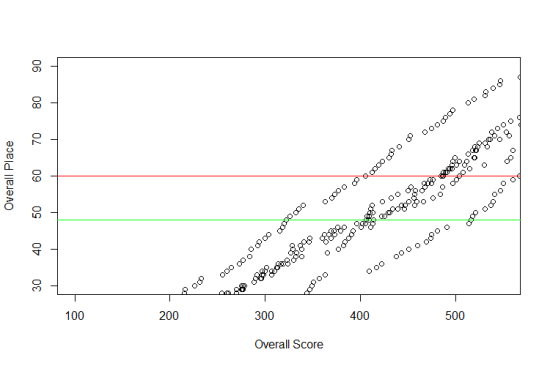
In the leaderboard data I analyzed, four women qualified for Regionals that did not complete a muscle-up in 14.4, but each did achieve a score of 180 on that work out, meaning they completed all the Power Cleans, and probably had some time to attempt a muscle-up. These women did place relatively high in the overall regional placement (each placed 39, 46, 47 and 48), but they still qualified.
And, this is exactly what we’ve seen in the past; the Open workouts are broad enough that a single movement will not necessarily disqualify an athlete.
Five workouts still serve a purpose
Somewhat mundanely, 2014’s Open competition supports my original conclusion: predicting regional qualification from a single workout’s performance is useless.
Figure 2 is similar to Figure 2 in a previous post, but includes only leaderboard data from 2014. Again, the r-squared of the regression (red line) is low (0.33), suggesting that a single workout score is little indication of how an athlete with place in the end and, therefore, whether or not she will qualify for Regionals.
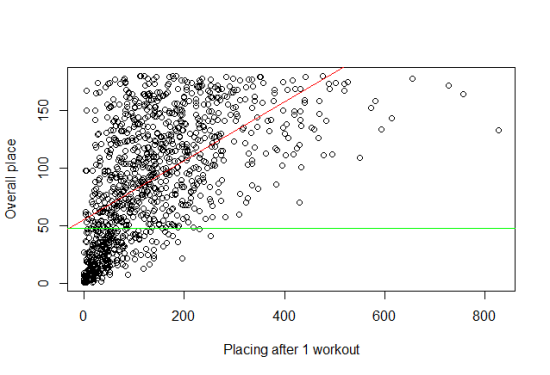
Let’s magnify again:
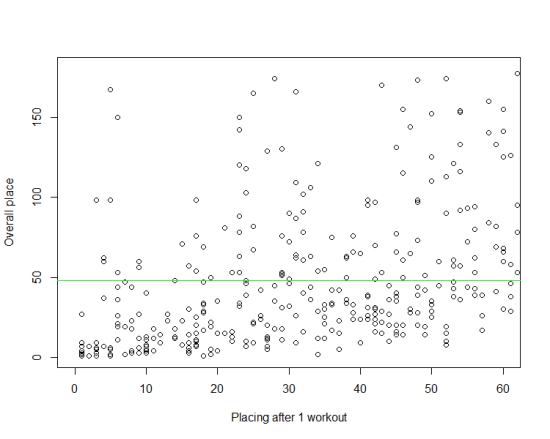
Now, think about it this way: An athlete places in the top 60 on an Open workout (or even in the top 10)… will she qualify for Regionals? Figure 3 says: who knows!? There are plenty of points above the green line in this plot, which represent athletes who finished in the top 60 in at least one workout, but didn’t make it to Regionals.
Let’s wrap it up
From a predictability standpoint, the 2014 CrossFit Games Open wasn’t that different from 2012 or 2013. Not even muscle-ups were as hard a line as Castro predicted.
The range of overall scores were similar: a total point score of ~500 was the cut-off in all three years.
The maximum placing was similar; I predicted getting over 300th place in any one workout will doom a competitor from qualifying for Regionals, and guess what the maximum place for a Regional qualifier was: 322 achieved by Hanna Gartman of CrossFit Hardcore North finishing 47th in the South East. Behind her was Becky Conzelman of Backcountry CrossFit, having a maximum placing of 294, but finishing 47th in the South West region. Importantly, Becky’s profile reports that she’s 42 years-old. Of regional qualifiers, she had the second worst performance across six regions in a single workout, but she still rocked it hard enough to qualify… at the individual women’s level, not just masters’ level. Awesome.
And the regional qualifier with the third worst performance in any single 2014 Open workout was… Allison Brager, of CrossFit Terminus, finishing 44th in the South East with a maximum placing of 273. So perhaps her worry of qualifying for Regionals as an individual was justified…


